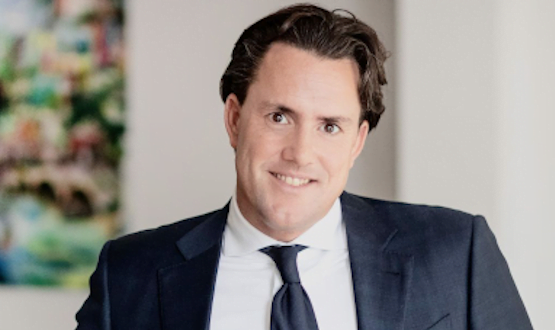Digital care: three issues that actually matter

Daan Dohmen, CEO of remote patient monitoring company Luscii, takes to the Rewired 2021 stage on Wednesday 17 March on the Virtual Care Summit. Ahead of the event he highlights three issues that should be addressed to make digital health work for everyone.
The Corona pandemic has given a huge boost to the use of digital care. Even the most conservative doctors are now contacting their patients via videocalls. But so much more is possible. Do we, as a sector, want to take full advantage of the opportunities? Then it is important to talk about the right issues. At the moment, a lot of the discussion is about technology and apps. Nice, but not the most important aspect as far as I am concerned. But what is?
Through our company, Luscii, we are leading the field in remote patient monitoring. With more than 20 million data registrations in seven countries, we have already learned many lessons. I believe in sharing that experience so that policies and discussions concerning the further development of digital care focus on the right issues.
NOT the technology itself, BUT how it is embedded}
Digital technology is sometimes seen by some as a kind of salvation for the sector. The healthcare landscape is therefore flooded with all kinds of ICT solutions, from apps to wearables. But all that technology is worthless if it isn’t embedded into daily healthcare practice. Apps and AI should work and be secure, but the real conversation should revolve around how to apply all that technology in a meaningful way. How do we reorganise healthcare processes? How does this change the work of doctors and nurses? And how do you prepare them?
Sometimes, hospitals implement remote patient monitoring without adjusting their care processes. That seems like a good idea, but it doesn’t work in practice. Everyone carries on as usual, leaving one or two nurses at the outpatient clinic overloaded with the extra work involved in monitoring patients at home. Patients don’t know where they stand either. Contact is only available at limited times, which doesn’t help to build trust. Such projects usually get stuck in a pilot phase or are simply shelved because they take up too much time. There is no room or energy for real impact.
There’s a great example of the opposite approach is OLVG’s virtual heart clinic in Amsterdam. From the outset, thought was given to how care processes could be adapted. The hospital set up a regional medical control centre together with GPs, where all home measurements, contact requests and responses are received. Algorithms continuously analyse the data and, in the event of deviations or deterioration, an alert is triggered immediately, which is analysed by experts at the control centre. And if more expertise is needed? Then the alert is forwarded to a specialist nurse or cardiologist. At the same time, the vast number of home measurements have adopted a central role in the treatment. After all, a clear curve is much more reliable on which to base medical policy than a one-off measurement in the hospital.
By adapting the care process, remote patient monitoring does work. There is professional support for the patient when needed and home measurements are of value. A well-organised triage system ensures doctors and nurses experience less work pressure instead of more. The digital cardiology clinic, which has only been in operation for a few months, already provides remote assistance to hundreds of patients on a daily basis.
NOT just reducing admissions, BUT creating a positive user experience
Lower costs, fewer admissions, we often talk about what e-health should deliver. But what we should be discussing more is how patients and healthcare providers experience digital technology. If they use technology in a pleasant and natural way, the positive effects will follow automatically. This is partly about accessibility. A healthcare app must be easy to use and all the necessary data must be available without an additional login. Also, it is about trust. That the healthcare provider knows that their patient will be visible when necessary. And that the patient knows he or she will receive help at the right time. This allows standard check-ups to be replaced with customised care, at exactly the right time: virtually if possible, physically when needed.
An often-forgotten element here is personal growth. If healthcare providers feel they are better at their job with the help of digital technology, and if patients experience more control over their own illness and feel safer, then we have really achieved something as a healthcare sector. That must be the goal. And if the number of admissions falls as a result, that is a nice bonus.
A good example is the regional approach of the Jeroen Bosch Hospital. Together with GPs, they have designed patient care entirely ‘around’ the patient, with the help of the Luscii platform. In the case of unstable patients, a direct line is available to medical specialists. If things improve, the GP serves as the first point of contact. And when the patient is stable, the self-care of Luscii takes over to coach the patient in living with his or her condition. This is how we really create a new world of care! Side benefit: admissions are also decreasing.
NOT costs, BUT quality of care
It is only natural that the debate over the future of healthcare often revolves around finance, and that also applies to the rise of digital technology. Who pays for it? What will it deliver today? However, this is often viewed at such a micro level, for example in a single department, and in the short term, which means that it is quickly over-calculated in a spreadsheet. And then, even before they reach full scale, great initiatives get stuck in a pilot phase because the money dries up. A terrible shame.
A wonderful example of how it can be done is the All Together Better approach in Sunderland, North England. Here, the NHS has set up a virtual ward that supervises patients who are constantly ‘in and out’ of hospital, known as revolving door patients. Instead of admitting them again and again, and then helping them get set up at home, specialised nurses from the recovery at home team use Luscii to literally keep a ‘virtual finger on the pulse’. Patients are visited at home if necessary and regular contact is maintained from a distance. The hospital is relieved as fewer admissions are necessary. And patients feel much more secure at home because they know they are being watched over.
Naturally, I understand the importance of the financial business case as an entrepreneur, but also from my role as Professor of Digital Transformation in Healthcare. After all, one of the focuses of my professorship is funding models in healthcare. And that’s precisely why I argue that if we really want to take full advantage of technology in healthcare, also financially, we need to take a broader view. Healthcare organisations are often still paid per transaction. A successful home measurement care path can therefore lead to a decline in income (while costs in, for example, home care increase). This paradox is a senseless barrier to development. A model in which we pay for quality and results is the future. If we involve patients more in their own treatment, and coach them remotely in areas such as lifestyle, this will automatically translate into lower costs, as there is no longer an incentive to keep summoning patients.
Get your ticket for Digital Health Rewired 2021 to join the must-attend virtual festival celebrating the best of digital health and care, taking place across 15-19 March 2021.



